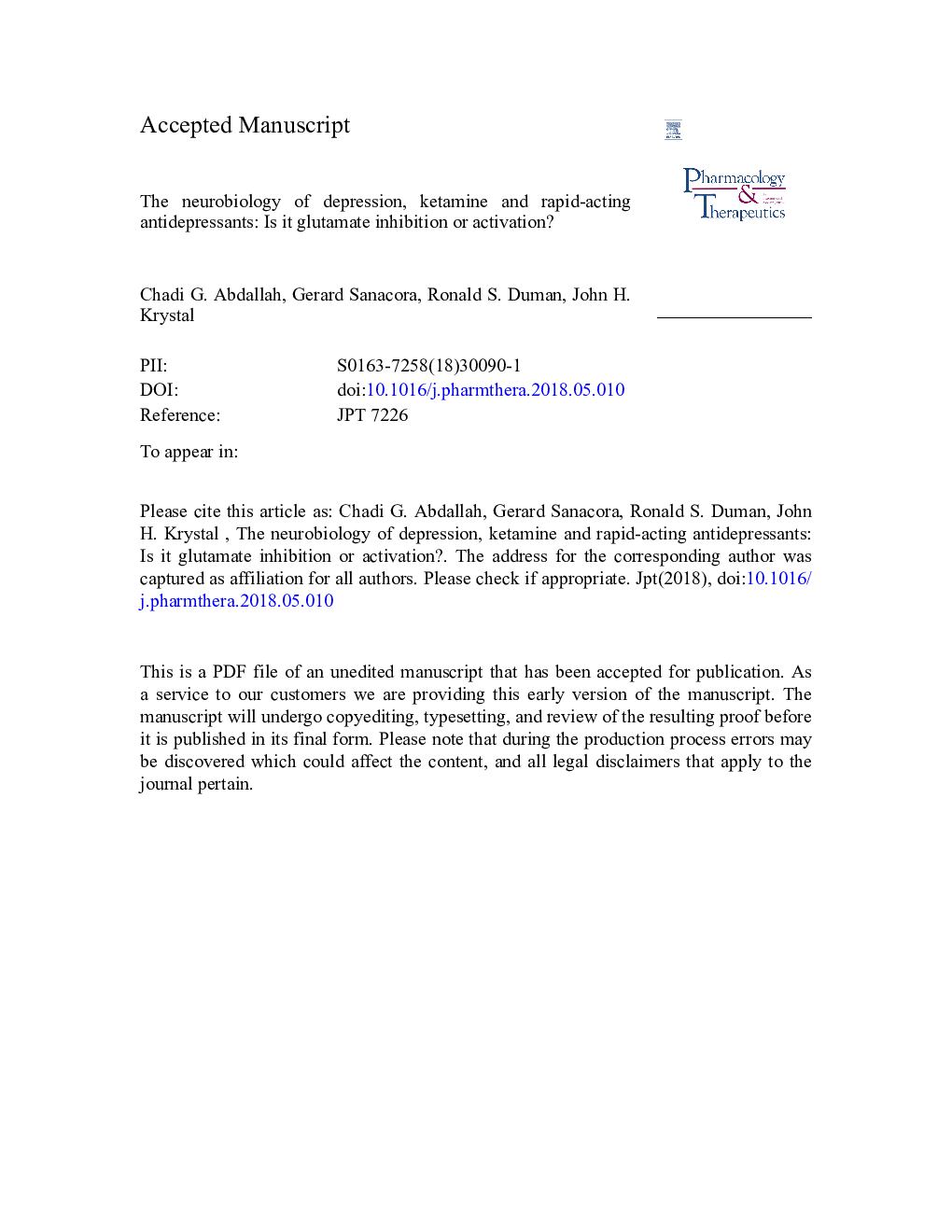| Article ID | Journal | Published Year | Pages | File Type |
|---|---|---|---|---|
| 11019354 | Pharmacology & Therapeutics | 2018 | 33 Pages |
Abstract
The discovery of the antidepressant effects of ketamine has opened a breakthrough opportunity to develop a truly novel class of safe, effective, and rapid-acting antidepressants (RAADs). In addition, the rapid and robust biological and behavioral effects of ketamine offered a unique opportunity to utilize the drug as a tool to thoroughly investigate the neurobiology of stress and depression in animals, and to develop sensitive and reproducible biomarkers in humans. The ketamine literature over the past two decades has considerably enriched our understanding of the mechanisms underlying chronic stress, depression, and RAADs. However, considering the complexity of the pharmacokinetics and in vivo pharmacodynamics of ketamine, several questions remain unanswered and, at times, even answered questions continue to be considered controversial or at least not fully understood. The current perspective paper summarizes our understanding of the neurobiology of depression, and the mechanisms of action of ketamine and other RAADs. The review focuses on the role of glutamate neurotransmission - reviewing the history of the “glutamate inhibition” and “glutamate activation” hypotheses, proposing a synaptic connectivity model of chronic stress pathology, and describing the mechanism of action of ketamine. It will also summarize the clinical efficacy findings of putative RAADs, present relevant human biomarker findings, and discuss current challenges and future directions.
Keywords
13C MRSmGluR5OCDAMPARNMDARBOLDSRIGADVDCCNACMBPABPHNKCSPPFCi.v.GBCBDNFα-amino-3-hydroxy-5-methyl-4-isoxazolepropionic acid receptorPosttraumatic stress disorderPTSDSocial anxiety disordergeneralized anxiety disorderObsessive compulsive disorderChronic stressDepressionMRIglutamate neurotransmissionIntranasalMagnetic resonance imagingIntravenousMetabotropic glutamate receptor subtype 5blood oxygen level dependentbrain derived neurotrophic factorSADprefrontal cortexmechanistic target of rapamycin complex 1Nucleus accumbenshydroxynorketamineKetaminei.n.N-methyl-d-aspartate receptorMuscarinic cholinergic receptor
Related Topics
Health Sciences
Pharmacology, Toxicology and Pharmaceutical Science
Pharmacology
Authors
Chadi G. Abdallah, Gerard Sanacora, Ronald S. Duman, John H. Krystal,
